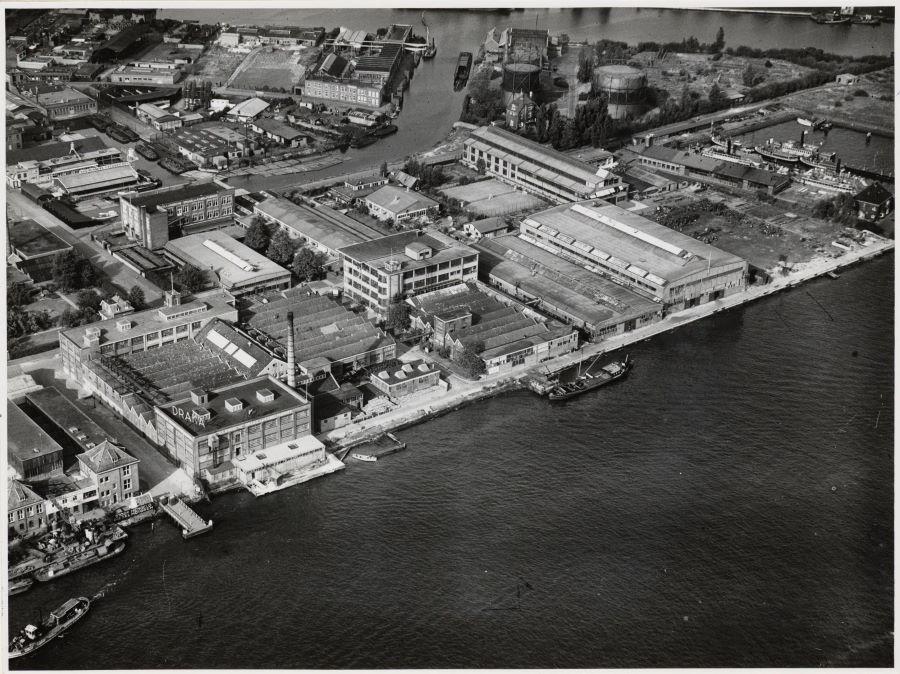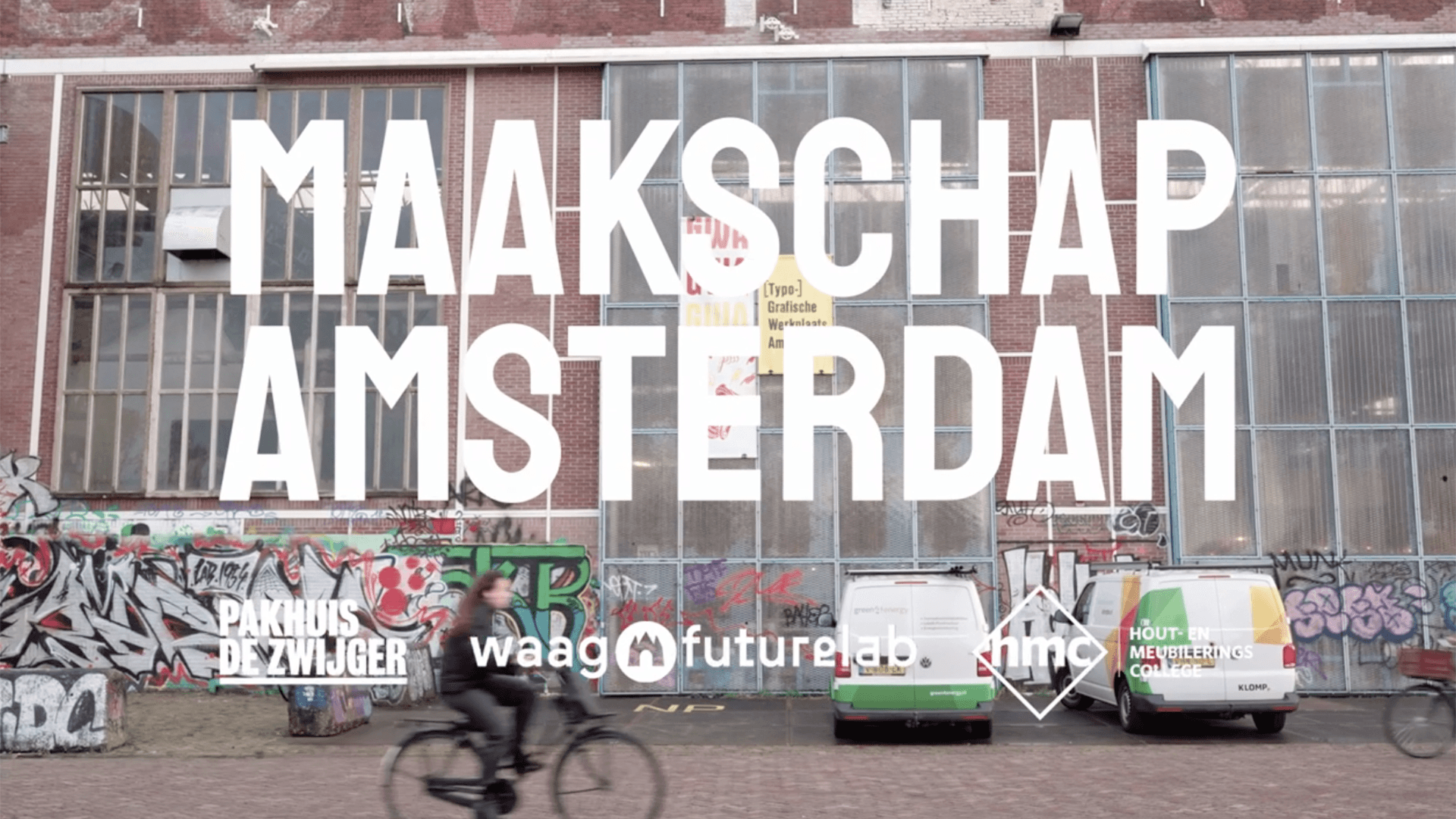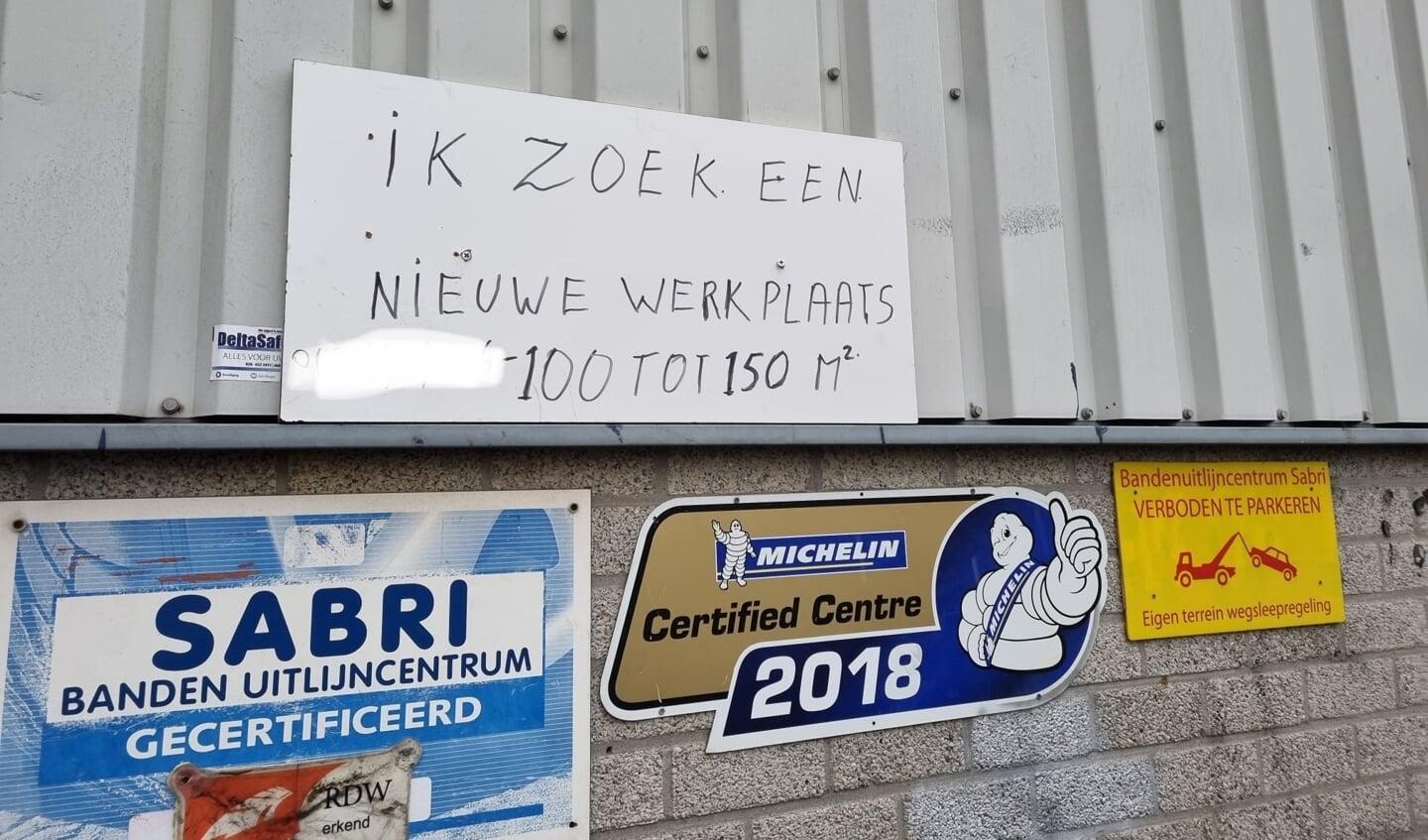Amsterdam-Noord has been a place for making, building, and creating since the 20th century. From the days of the large scale ship building industry to the transformation of these industrial spaces into modern makerspaces, the area has continuously fostered collaboration, creativity, and ingenuity. To further understand the changing maker landscape in Noord, Martijn Lammerts (journalism intern at Waag) carried out research over sixteen weeks to understand where makers work, how long they will stay in their workspace, and what they will need.
The research showed that 60 percent of the interviewed makers will vacate Noord before the end of 2028. In addition, it was learned that makers felt very connected to the area and community, and reflected on the continuous thread of making in Noord over time. Makership reflects not only the history of the area but is also a crucial component in working toward the city's vision to become circular; Amsterdam has set the goals of halving the use of raw materials by 2030 and becoming fully circular by 2050. Below are stories of two makers with a long history in Noord that contribute toward these ambitions but are among those that may need to vacate the area.
Read more about the research here.
Van Dijk & Ko
Van Dijk & Ko is a well-known place in Noord for finding vintage and antique furniture. Started as a small stand on the local market, they grew into a larger company that now resides in an old factory of 2500m2 on the Papaverweg. The factory originally housed Groenveld, Van der Poll & Co, which produced switch boxes and traffic lights as well as space for the repair of materials related to electrical engineering. Continuing the thread of repairs, Van Dijk & Ko repairs or refurbishes the furniture they sell, creating a circular hub within the space. The former electric factory offers the company plenty of space for storing and repairing, while the old building fits the antique aesthetic of Van Dijk & Ko.

The public plans of the building housing Van Dijk & Ko, however, are in flux. Van Dijk & Ko surmises they will be forced to leave the premises around 2025. Their space is surrounded by new apartments which were advertised as being close to Van Dijk & Ko. Despite being used in marketing to attract people to Noord, they ironically now have to leave the area to make space for more apartments. Van Dijk & Ko are currently looking for a new place in Amsterdam, but find that there are little to no affordable spaces that are big enough to house a company their size. As such, they may need to consider closing down or moving the business outside of the city.
Zikking en Schriek
Zikking en Schriek is a family business with deep ties to Amsterdam Noord as they have been located on the banks of the IJ-river since 1939. The company has a long history of repairing barges and ships; however, they have experienced that the needs of the city and of customers have changed over time. Nowadays, the company focuses on refitting the engines of barges to meet new, cleaner requirements.

Zikking en Schriek was nearly forced to leave their workspace by the municipality in order to make space for a bridge over the river. The company and the neighbouring businesses such as Shell protested. In the end, the municipality of Amsterdam discarded the idea. The company knows, however, that they will need to leave their current space in the future. With the exception of Shell, Zikking en Schriek is the longest existing company in the polder. As they have been located in Noord for almost 100 years, they feel they are an integral part of Noord and its industrial heritage. With a long established relationship with the area, they believe their voice is critical in conversations regarding relocation.
Yumen Bionics
Yumen Bionics is an assistive technology company located in het Hamerkwartier in Noord. This formerly industrial area is now home to many start-ups and experimental companies located in ‘antikraak’ (or anti-squatter) premises which offer low rent to deter squatters from inhabiting these buildings until a new (definitive) purpose is found for them. One of these premises in het Hamerkwartier is the old Draka Kabelfabriek. Founded in 1910, Draka served as the provider of cables during the cities' transformation during the oil shortages of World War 1. They provided the city with the necessary cable to support electric lighting within Amsterdam. The factory closed after 104 years in 2014 and now serves as a space for makers to develop their work.
Yumen Bionics is one of the companies now working in the old Draka premise, designing and creating non-motorized exoskeletons for children with Duchenne Muscular Dystrophy. Due to the rarity of the disease, little funding for development is available. The company needs to be resourceful with funding, and one way they do this is by using the affordable space available in the old factory. This also serves another purpose - the factory is easily accessible for children, often in wheelchairs, allowing them to visit Yumen Bionics to have their exoskeletons fitted.

Het Hamerkwartier is on the brink of change, however, as the area will be transformed into apartments. This transformation will force Yumen Bionics and the other companies and makers residing in the factory to vacate. Yumen Bionics formally has until the end of February 2023 before they have to leave. Although the company is hopeful that they can find a way to stay in their space, it does create a question for the foreseeable future. Yumen Bionics hopes to find a new affordable place in Amsterdam but are limited in options due to high rent prices throughout the city.
Moving Toward a Maker Collective
These stories illustrate how makers contribute to the city’s circular transformation while simultaneously experiencing uncertainty of a future in their current spaces. To better understand this changing environment and to support makers, the Amsterdam pilot of CENTRINNO aim to bring all makers together under a ‘Makers Collective’. This collective can then collaboratively work together to lobby policy makers towards a future that prioritises both circularity and makership within the city.
To learn more about our future plans and the mapping project, please visit the Amsterdam CENTRINNO Cartography page.


